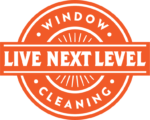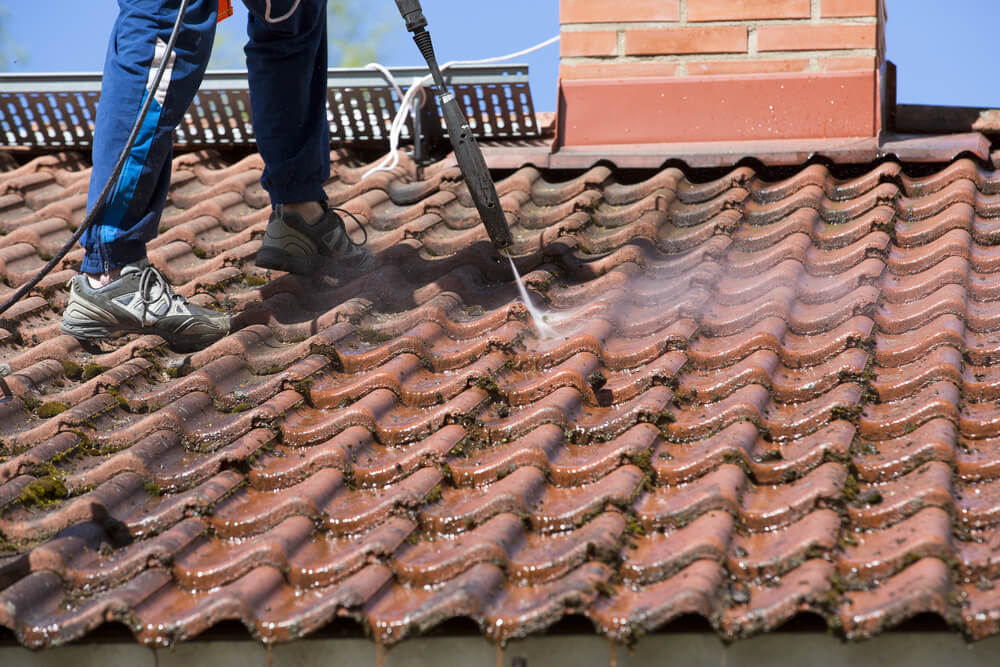Cleaning your roof regularly is important for keeping it in good condition and preventing any damage from occurring. As a roof maintenance specialist, I’m here to tell you how to clean your roof without damaging it.
The first step is to inspect the roof. You’ll want to make sure there are no loose or missing shingles, that the flashing and vents are secure, and that the gutters and downspouts aren’t clogged with debris.
Once you’ve done that, you can move on to cleaning the roof surface itself.
Inspecting Your Roof
Before you start cleaning your roof, it’s important to assess the damage and check its stability. Inspecting your roof is essential for any maintenance project, as this will give you a better idea of what kind of cleaning materials and methods you should use.
Look for any missing or broken shingles and make sure that the fasteners are secure. Also check for holes and cracks in the surface as well as granular loss from asphalt shingles. Make sure to repair any damages before proceeding with the cleaning process.
If everything looks good, then you can move on to preparing the surface for cleaning. But if there are damages that need attention, it’s best to take care of those first before moving forward.
Preparing The Roof Surface
Now that you’ve inspected your roof, it’s time to prepare the surface for cleaning. This is an important step in avoiding damage and maintaining your roof’s longevity. To do so, we’ll need to remove any debris from the roof first.
Start by using a soft-bristled broom or a blower to sweep away any leaves, sticks, dirt or other debris from the roof. Take special care not to scratch the surface with a metal broom or rake as this can cause permanent damage.
Next, use a pressure washer set at low pressure (1,000 – 1,500 PSI) and with a wide fan tip sprayer attachment to clear away debris and dirt from the shingles. Move slowly but steadily over the entire surface of your roof and make sure no one area gets too much attention as this can cause unnecessary wear and tear.
Here are five tips for preparing your roof surface:
- Sweep off all loose debris with a soft bristled broom or blower before washing
- Use only low pressure settings on your pressure washer (1,000 – 1,500 PSI)
- Aim the pressure washer nozzle at an angle of 45–60 degrees to avoid causing damage
- Move slowly yet steadily over each section of your roof when washing it
- Avoid oversaturating any single spot on your roof
By following these steps carefully you can ensure that you’re properly preparing your roof for cleaning without damaging it in the process. Now let’s move on to removing more stubborn stains and discolorations!
Removing Debris
It is essential to regularly remove debris from your roof to prevent buildup and avoid damaging the structure. To begin this process, first inspect your roof for any loose debris. Once identified, use a leaf blower or a soft, bristled broom to gently sweep away the debris. It is important to be careful with your tools when cleaning the roof as sharp edges can cause damage.
Tool
Use
Leaf Blower
Gently blow away debris
Soft Bristle Broom
Sweep away debris
Once all loose debris has been removed, it is time to move onto using the right cleaning tools. Keeping your roof free of dirt and mold will maintain its structural integrity and aesthetic appeal.
Using The Right Cleaning Tools
When it comes to cleaning your roof without damaging it, selecting the right materials and utilizing preventative measures are key. To make sure that your roof remains in good condition during the cleaning process, here is what you should do:
- Select Materials – Use only soft-bristled brushes or cloths when cleaning off dirt and debris from your roof. Avoid using sharp or abrasive materials that could damage the surface of your roof.
- Preventative Measures – Before attempting to clean your roof, inspect it for any signs of weakness or damage. If there are any weak spots on the roof, they should be repaired before you begin cleaning it to prevent further damage from occurring.
Finally, taking the time to properly prepare before starting the cleaning process will ensure that your roof is not damaged by any unnecessary force or pressure during the cleaning process. Taking these steps will help keep your roof looking great for years to come.
With a clean and well-maintained roof, you can move on to applying protective sealant for additional protection against future wear and tear.
Applying Protective Sealant
Now that you have finished cleaning your roof, it is important to protect the shingles and extend the life of your roof. This can be done by selecting a sealant that is appropriate for the type of shingles on your roof.
Make sure to read all instructions before applying the sealant. It’s important to select one that is designed for outdoor use and suitable for the climate where you live.
Applying this sealant will help protect your roof from further damage caused by weather and other environmental conditions. Depending on the type of sealant used, you may need to reapply every few years or after major storms.
Be sure to check the product label for proper application techniques and follow them closely to ensure proper coverage of each shingle.
Once applied, the sealant should give you peace of mind knowing that your shingles are now protected from further damage and can better stand up to extreme weather conditions. With proper care and maintenance, you can trust that your roof will last for many years to come.
Frequently Asked Questions
What Type Of Roof Material Is Best For Cleaning?
When it comes to cleaning your roof, the material it’s made of is key.
The proper tools and cleaning solutions to use depend on whether you have asphalt shingles, metal, slate, or concrete tiles.
Asphalt shingles are durable and easy to clean with a brush and mild detergent solution.
Metal roofs require special cleaners that won’t damage the finish and can be power washed if needed.
Slate requires a gentle touch as pressure washing can easily chip away at the tiles.
Concrete tiles should be cleaned with either a soft-bristled brush and cleaning solution or a pressure washer set on low.
It’s important to take extra care when cleaning any roof material to avoid damaging it.
How Often Should I Clean My Roof?
When it comes to cleaning your roof, preventive maintenance is key.
Depending on the type of roof material you have, you should clean your roof at least once a year.
If you have an asphalt or metal roof, pressure washing is a great way to keep it clean and in good condition.
Pressure washing should be done every couple of years to ensure your roof lasts for many years to come.
Are There Any Special Safety Precautions I Should Consider?
When considering safety precautions when cleaning your roof, using ladders and working at heights should always be taken into account.
It’s important to make sure your ladder is secure, and that you are comfortable with the height you are working at before starting any job.
When cleaning your roof, it’s best to use a professional who has experience in safely using ladders and working at heights.
This will ensure that the job is done correctly and safely, without damaging the roof in any way.
Is It Necessary To Use Sealant After Cleaning?
When it comes to proper roof maintenance, the necessity of sealant after cleaning is dependent on the condition of the roof.
If the roof has been properly prepared and a suitable soap selection is used, then sealant may not be necessary.
However, if there are any signs of wear or damage to the roof’s surface, then applying sealant afterwards can help prolong its life without causing further damage.
Are There Any Areas Of The Roof I Should Avoid When Cleaning?
When it comes to cleaning your roof, there are areas you should always avoid!
Pressure washing and soft scrubbing should never be done on the ridge cap or any other area with sealant. Doing so can cause serious damage that can’t be reversed.
And don’t forget about the valleys in your roof – they’re extremely fragile, so use caution when cleaning them!
Knowing where to and where not to clean will help you keep your roof looking pristine without causing any damage.
Conclusion
It’s important to remember that cleaning your roof is an important part of maintaining it. Taking care of your roof now can help you avoid costly repairs down the road.
As a general rule, you should clean your roof every six months. This ensures that any dirt or debris won’t accumulate and start to damage the material.
With proper maintenance and regular cleaning, most roofs can last 20-25 years. That’s why it’s so important to take the time to clean it the right way, without causing any damage.
I suggest using gentle detergents and soft brushes or cloths so you don’t scratch or dent your roofing material. It’ll be worth it in the long run!
- Meet The Founder – Brandon Gawdun - April 12, 2024
- Elevate Your Home: The Next Level Approach to Spring Cleaning - April 12, 2024
- Spring Events – Okanagan - April 12, 2024




